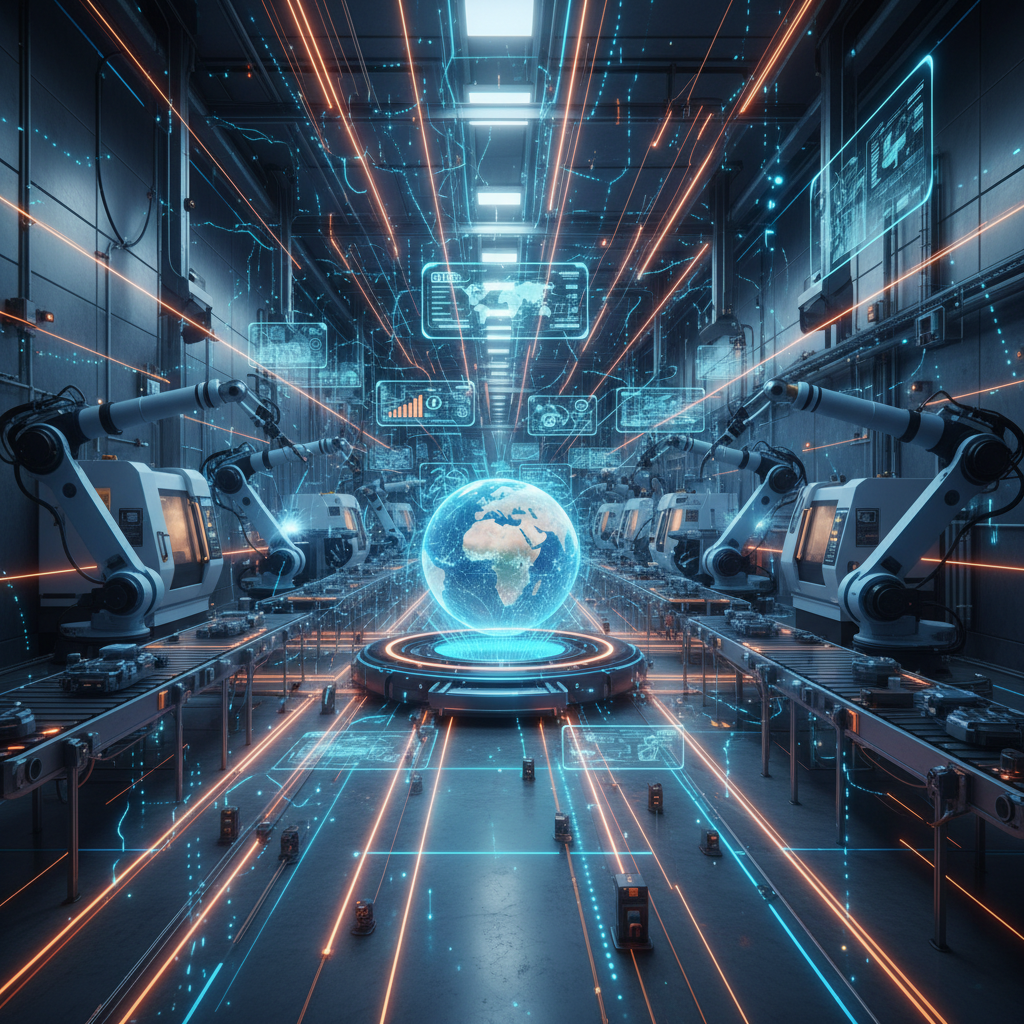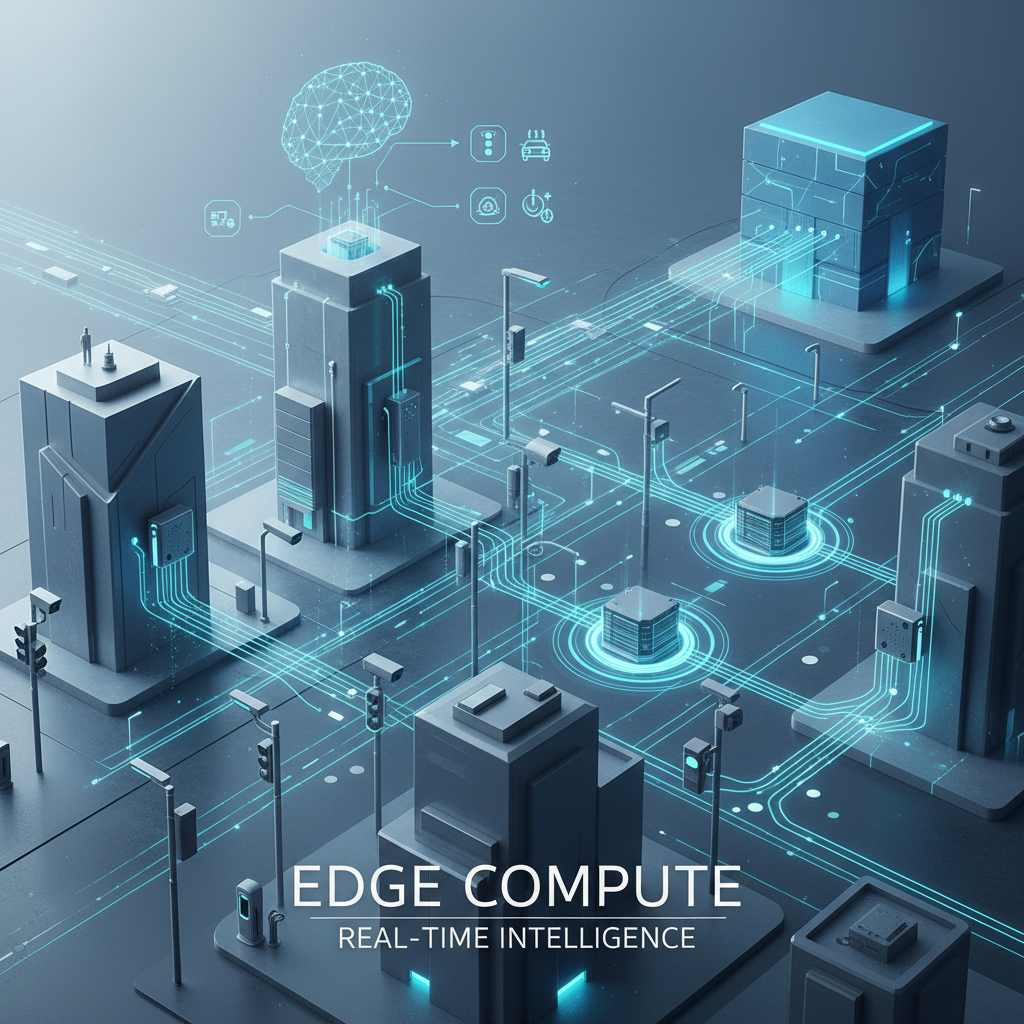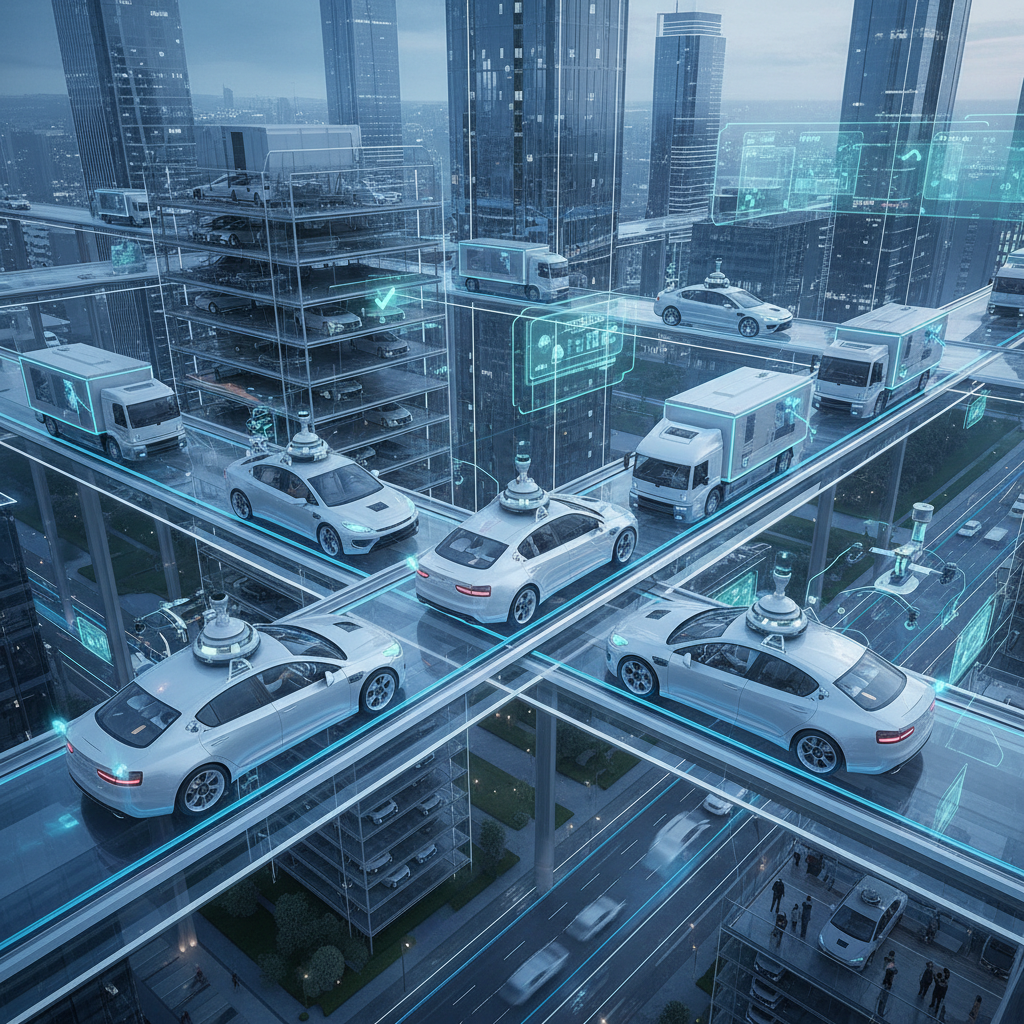
Welcome to TechPulse™
TechPulse™ is your comprehensive weekly guide to the latest developments in Industrial IoT, Telecommunications, Edge Computing, and Autonomous Vehicles. This curated newsletter unpacks the latest news, explains why it matters for business leaders and investors, and provides expert insights to spark your curiosity. Let's dive in!
This past week was unlike any other. While most of the tech world was preoccupied with incremental updates, something far more significant was happening in Dubai. At GITEX Global 2025, an extraordinary convergence of minds, money, and innovation painted a vivid picture of where technology and your business are actually headed.
From partnerships quietly reshaping entire smart cities, to autonomous vehicles hitting actual roads (not just test tracks), to industrial systems becoming genuinely intelligent for the first time, this wasn't just another week of announcements. This was a watershed moment.
Here's what matters: The companies and leaders moving now aren't just ahead. They're playing a different game entirely. If you're serious about building, scaling, or investing in the future, what I've found this week could fundamentally change how you think about the next five years.
These aren't speculative fever dreams. They're happening today. And if you're wondering whether you're making the right bets, you need to read on.
Industrial IoT: The Factories That Think
Let me be direct: The age of "dumb factories" is over. What's emerging isn't just more sensors and more data. It's the birth of industrial systems that don't need constant human intervention. Systems that learn, adapt, and optimize themselves in real time.
This isn't theoretical. It's happening right now, and the organizations paying attention are creating sustained competitive advantages that their rivals can't catch up to.
At GITEX, the announcements were telling. InfraX, a subsidiary of Digital DEWA, partnered with MEA-Comm to orchestrate something genuinely transformative: the acceleration of smart city infrastructure across the UAE. Signed October 16, this collaboration merges real-time data analytics with predictive maintenance and urban intelligence in ways that were technically impossible just years ago.
The combination of MEA-Comm's middleware expertise with InfraX's digital platforms creates a foundation that's elegantly simple but devastatingly effective. What does this mean in practical terms? Think about downtime, the silent killer of margins. Similar integrations have already demonstrated cuts of up to 30% in utilities and critical infrastructure. That's not incremental improvement. That's the difference between thriving and merely surviving.
Then there's MinewTag, a standout that debuted end-to-end solutions for retail and warehouse operations. Their e-paper shelf labels and IoT trackers aren't flashy, but they're brilliant. Why? Because they solve one of logistics' most expensive problems: the hemorrhage of inventory waste. We're talking about 20% inventory savings for forward-thinking operators. In a sector where margins matter like oxygen, this is the kind of move that compounds year after year.
Huawei brought its own contribution, AI-powered innovations centered on next-generation industry intelligence. While the messaging centered on AI networks and data lakes, the real story is simpler: these tools are the scaffolding for autonomous manufacturing operations in oil, gas, and industrial production.

Smart factory solutions leveraging Industrial IoT showcased at GITEX 2025.
💡 Why This Matters to You
For entrepreneurs and decision-makers: The $500 billion Industrial IoT market by 2030 isn't a pie-in-the-sky projection. It's already here. The partnerships announced this week, InfraX-MEA-Comm, MinewTag's expansion, and Huawei's push signal that the infrastructure for competitive advantage is being built right now.
The companies deploying these systems today will be the ones setting prices and margins five years from now. Those waiting? They'll be reacting instead of leading. The window for first-mover advantage isn't decades long. It's months.
Telecommunications: Building the Connected Future
5G was supposed to revolutionize everything. For a long time, it felt like vaporware. Impressive on paper, underwhelming in practice. That's changing. And this week proved it.
The story here centers on profitable monetization, and that's a subtly radical shift. It means carriers aren't just building faster networks; they're building better business models around them.
TPG Telecom, Australia's major player, renewed its agreement with MATRIXX Software through 2030, announced on October 14. On the surface? It's a contract extension. In reality? It's a vote of confidence, one of the largest carriers in the Southern Hemisphere, affirming that this is the direction forward.
What changed is strategic. MATRIXX becomes the monetization engine for TPG's nationwide 5G Standalone rollout. Translation: simplified consumer experiences, a wireless-first strategy that actually works at scale, and the ability to drive revenue from advanced 5G services rather than just bandwidth. For TPG, this could mean a 15% boost in Average Revenue Per User. In the telecom world, that's extraordinary.
Meanwhile, Timekettle's Middle East debut signals something equally important: premium growth markets are hungry for innovation. Real-time translation devices integrating with telecom networks, the infrastructure for cross-cultural communication is being built now.
And Huawei's smartwatch app launch with Gulf News (announced mid-week) reveals how content delivery is becoming invisible, seamless, and wearable-first.
These aren't isolated moves. They're pieces of the same puzzle: How do you build billion-dollar value in connectivity? The answer isn't faster speeds. It's more innovative integration.
💡 Why This Matters to You
If you're in enterprise, telecommunications, or digital infrastructure, the companies dominating telecom by 2028 will be those who understood this transition early. We're talking about unlocking $1 trillion in global telecom value, but only if you have the right partnerships and the right strategy.
The TPG-MATRIXX blueprint? Study it. Replicate it. Apply it to your domain. Middle East expansions like Timekettle's? These markets are projected to grow 2-3x faster than saturated Western markets. The barriers to entry are lower. The upside is massive.
Investors and operators who recognize this now will be the ones leading the industry for the next five years. The connected world is being built. Are you building it, or being left behind?
Edge Computing: Intelligence at the Speed of Reality
Here's something most people don't talk about: cloud computing was a revolution. But it has a fatal flaw. Latency. That multi-millisecond delay between something happening and the cloud deciding what to do about it. For many applications, every millisecond matters. Actually, they matter a lot.
Edge computing solves this by bringing intelligence as close to the problem as physically possible. This week, we saw it mature from theoretical to practical in a way that's genuinely compelling.
The partnership between Supermicro, AMD, and Wobot.ai (announced October 14) is the kind of announcement most people will miss. Don't be one of them. Here's what they built: a Supermicro 1U server powered by AMD EPYC processors that can analyze in-store video in real time. We're talking zone analytics, heat maps, customer path tracking, all integrated with existing CCTV infrastructure, all producing insights with latency measured in fractions of a second instead of seconds or minutes.
Why is this not sexy sounding but actually revolutionary? Because it works. One retailer demonstrated a 2-2.5% annual revenue uplift from faster service decisions driven by these real-time insights. In retail, 2% uplift is often the difference between crushing your targets and explaining why you didn't.
The SONiC Foundation presented further evidence at the OCP Global Summit (October 13-17): their ecosystem is accelerating around open-source network operating systems optimized for AI workloads at the edge. Distributed processing becomes faster. More efficient. More controllable.
And IonQ's quantum advancements, showcased at GITEX, hinted at a future where edge security becomes quantum-resistant, solving problems we'll desperately need solved soon.

Edge computing innovations enabling real-time analytics showcased at GITEX 2025.
💡 Why This Matters to You
The edge computing market is projected to hit $250 billion by 2028. But here's the thing: it's not about the hardware or even the software. It's about understanding that real-time decision-making is becoming an expectation, not a luxury.
If you're building with the assumption that 500 milliseconds of latency is acceptable, you're already losing to someone building for 50. Edge computing isn't just a technical upgrade. It's a mindset shift, from cloud-first to reality-first.
Build hybrid edge-cloud setups. Cut costs by 40-60%. Enhance privacy. Reduce risk. The companies that nail this? They won't just be competitive. They'll own their segments.
Autonomous Vehicles: The Acceleration Is Real
For years, autonomous vehicles felt perpetually "five years away." That narrative is dying. What's replacing it is messier, more realistic, and far more interesting. Real testing. Real deployments. Real regulations are being negotiated.
This week accelerated the timeline in three distinct ways.
Autonomous A2Z partnered with the UAE's Space42 for a joint exhibition at GITEX (announced October 14), localizing Korean autonomous technology for Middle Eastern demonstrations. They're unveiling a Kia PV5-based Level 4 vehicle specifically positioned for APEC 2025. Translation: self-driving vehicles for commercial deployment in Asia-Pacific, within the year. This isn't a prototype sitting in a garage. It's a platform built for regions where regulatory approval is moving faster than Western markets.
Then Waymo made a move that signals genuine confidence: driverless taxis coming to London in 2026. Testing with safety drivers starts soon, expanding on their five-city U.S. operations. But here's what matters: they're now navigating the most complex regulatory environment outside of California. If Waymo succeeds in London, they've cracked the global code. And if they crack that code, the timeline for mainstream deployment compresses dramatically.
But the most audacious announcement? Tensor's L4 fully autonomous Robocar for private ownership (announced mid-week at GITEX). Over 100 sensors. A foundation model for real-time decision-making. Data sovereignty controls. It's the first truly Level 4 autonomous vehicle designed not for fleets, but for individual owners. Think about what that means: the power of autonomous driving in your driveway, not in a taxi service you summon.

Advancements in autonomous vehicle technology showcased at GITEX 2025.
💡 Why This Matters to You
The autonomous vehicle market is projected to reach $7 trillion by 2050. But that's not the point. The point is that logistics, delivery, and personal transportation are all about to experience structural change.
CEOs in logistics? Waymo's London push is your wake-up call. Expect 50% cost reductions over the next decade as autonomous adoption accelerates. That's not possible to ignore.
Investors? A2Z-Space42's move signals high-growth opportunities in emerging markets where regulatory friction is lower. Tensor's play signals a new category: personal autonomous mobility. One of these bets could make a career.
And culturally? We're transitioning from "horsepower" to "brainpower" as the measure of a vehicle. The companies building ecosystems for that transition will define the next decade of transportation. Everyone else will be commodity players in someone else's ecosystem.
The Pattern Beneath the Noise
Step back and look at what this week actually revealed.
InfraX-MEA-Comm isn't just a partnership; it's two companies betting that distributed intelligence is the future of cities. TPG-MATRIXX isn't just a contract; it's an affirmation that profitability through integration beats raw speed. Waymo-London isn't just an expansion; it's a statement that regulatory trust and ecosystem thinking matter more than technological perfection. Tensor's personal robocar isn't just a vehicle; it's a declaration that individual autonomy, not corporate control, is the endgame.
The common thread? Collaboration. Integration. Ecosystem thinking.
The leaders in each of these domains aren't trying to own everything. They're building networks where the whole is genuinely more valuable than the sum of its parts. That's the mindset that wins long-term.
What's Next
AI is going deeper into every vertical we discussed this week. Expect 6G trials in telecommunications. Quantum-enhanced security at the edge. Widespread IIoT deployment in smart grids. Edge AI in healthcare systems. CES 2026 will be a preview. U.S.-EU autonomous vehicle regulations are coming. Keep an eye open for them.
But here's what really matters: The window for strategic positioning is now. The companies making the right moves today, the ones building the right partnerships, betting on the right technologies, positioning themselves in the right markets, will be the ones guiding the industry story in 2027. They won't be lucky. They'll be precisely positioned.
The question for you isn't whether these trends are real. They clearly are. The question is: Are you positioned on the right side of them?
The Closing
This week's pulse reveals something unmistakable: acceleration across every sector we track. From Dubai's GITEX revelations to edge AI's industrial transformation, and from smart factories to autonomous fleets, these developments aren't isolated events. They're interconnected signals of a fundamental shift in how the world works.
So here's my question for you: Which of these trends are you positioning yourself for?
Are you building the infrastructure that will power tomorrow's factories? Investing in the connectivity that will link billions of devices? Deploying the AI that will make decisions at the speed of reality?
Or are you waiting for more clarity, more proof, more certainty before you act?
Because here's the uncomfortable truth: by the time everyone agrees where the future is headed, the extraordinary returns are gone. What's left is table stakes, the minimum investment required just to stay in the game.
We'll be back next week with more unique insights. Until then, stay curious, stay strategic, and remember: in convergent markets, the bold not only win, but they also define what winning means.
Thank you for reading this week's TechPulse. If this resonated, if you're feeling the urgency but aren't sure exactly where to position your next move, that's precisely why I created the subscription to our paid content. In a world moving this fast, the difference between awareness and actionable strategy is the difference between hope and results.
Upgrade today. I'll see you in the deeper analysis.
Continue reading this premium article
Unlock exclusive industry insights available only to subscribers
Exclusive Research
Proprietary data and analysis not available anywhere else
Competitive Edge
Stay ahead with forward-thinking strategies and insights
Expert Community
Connect with industry leaders and innovative thinkers
Unlimited Access
Unlock all premium content with a subscription







